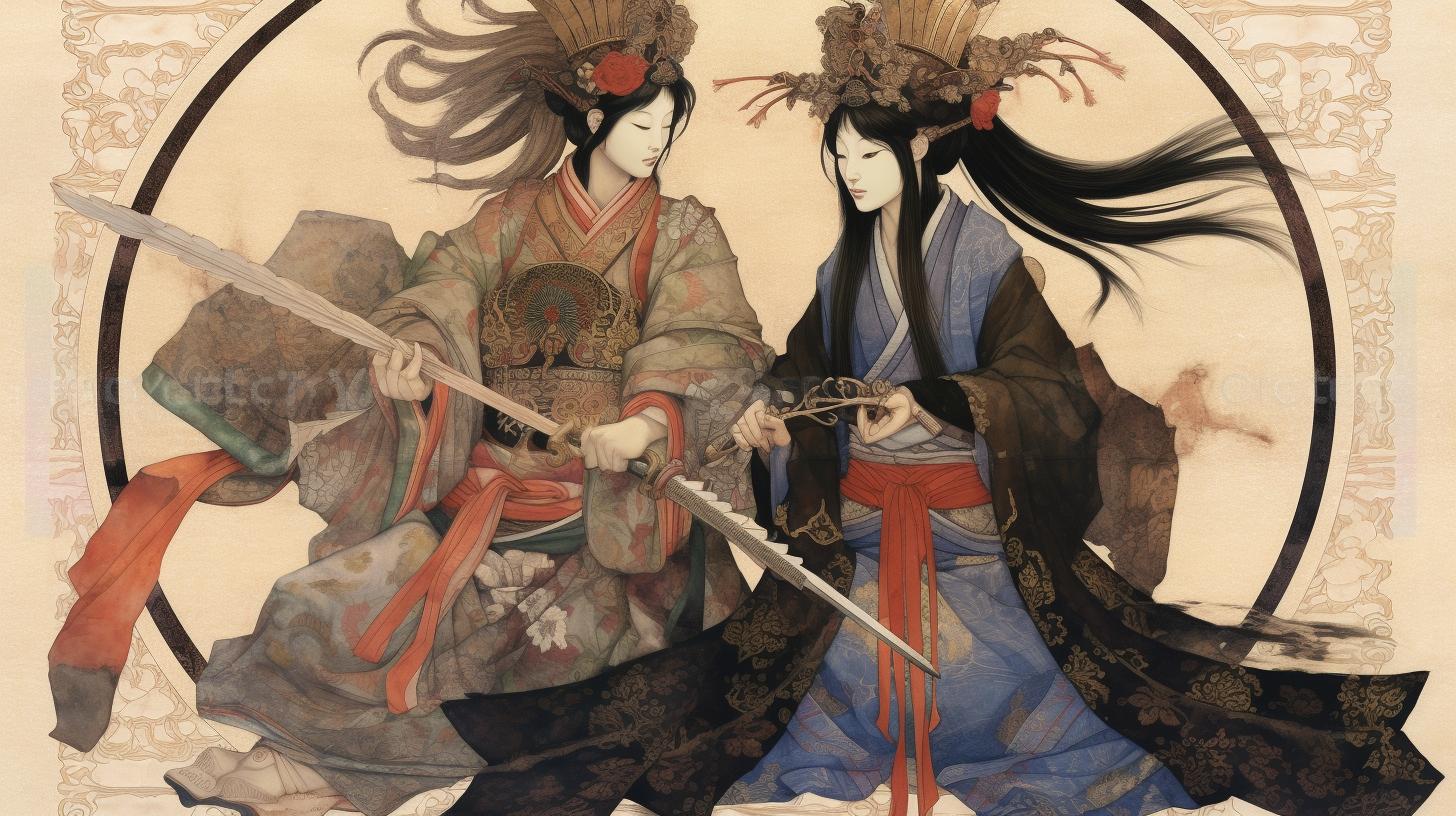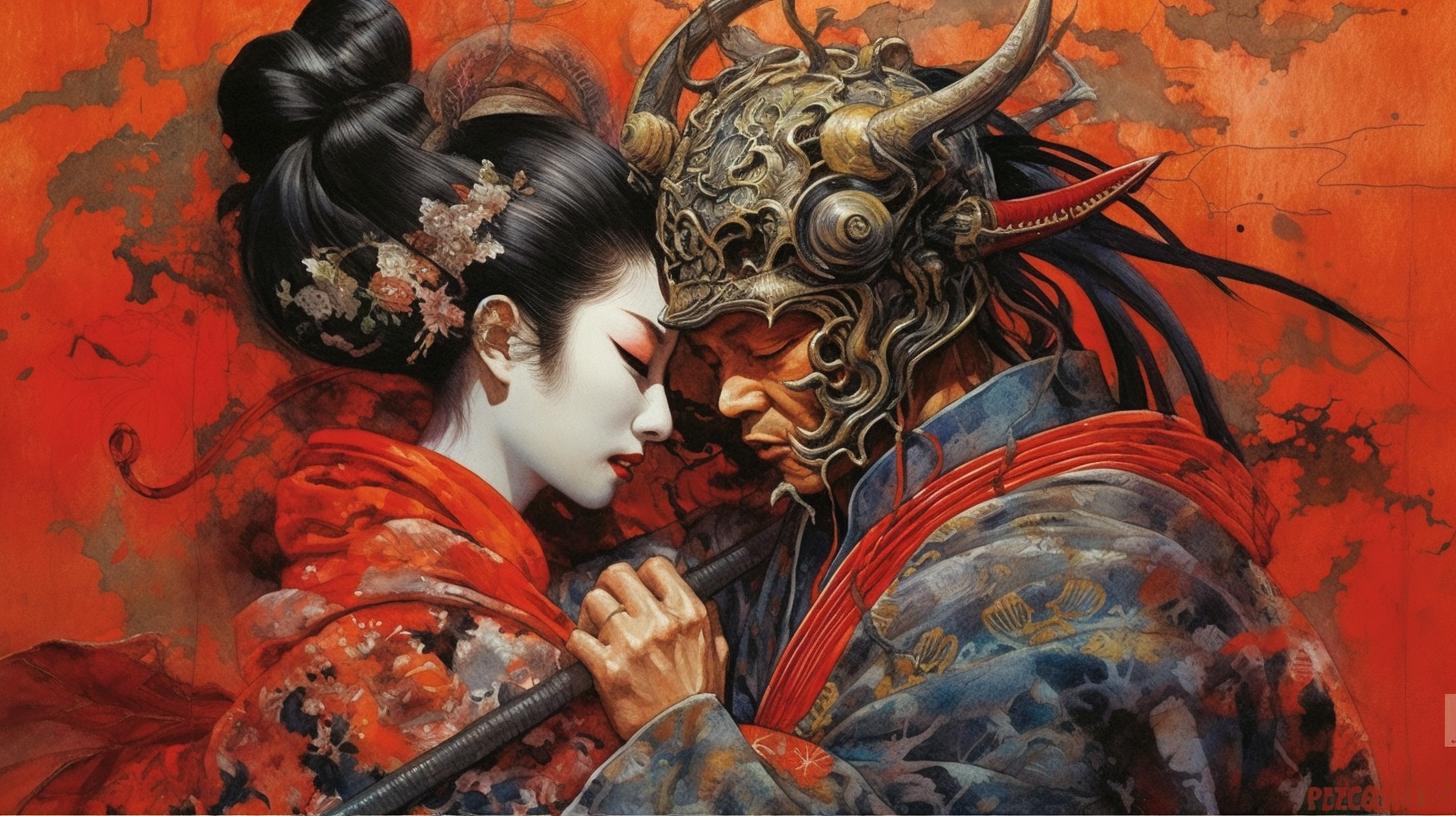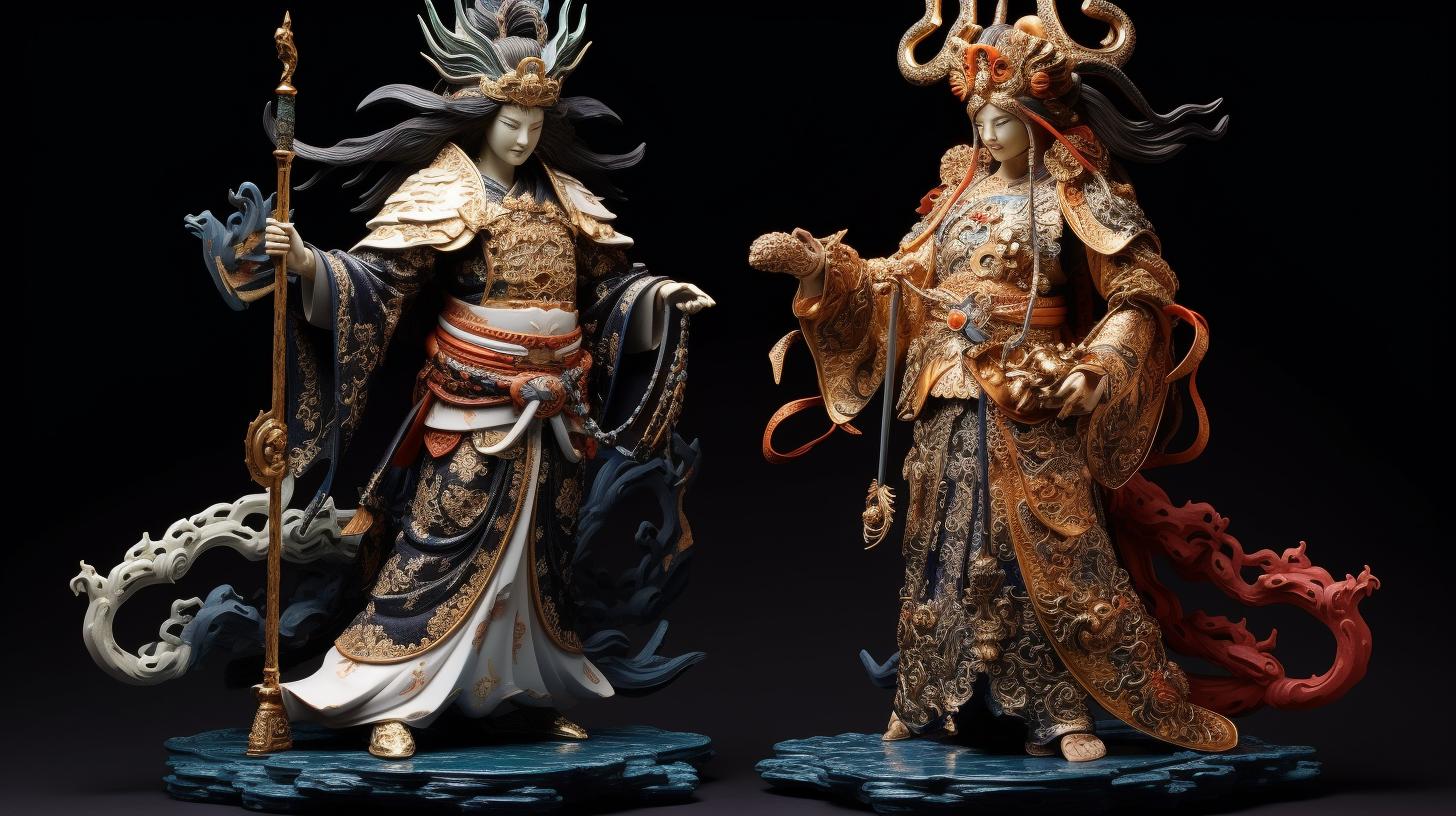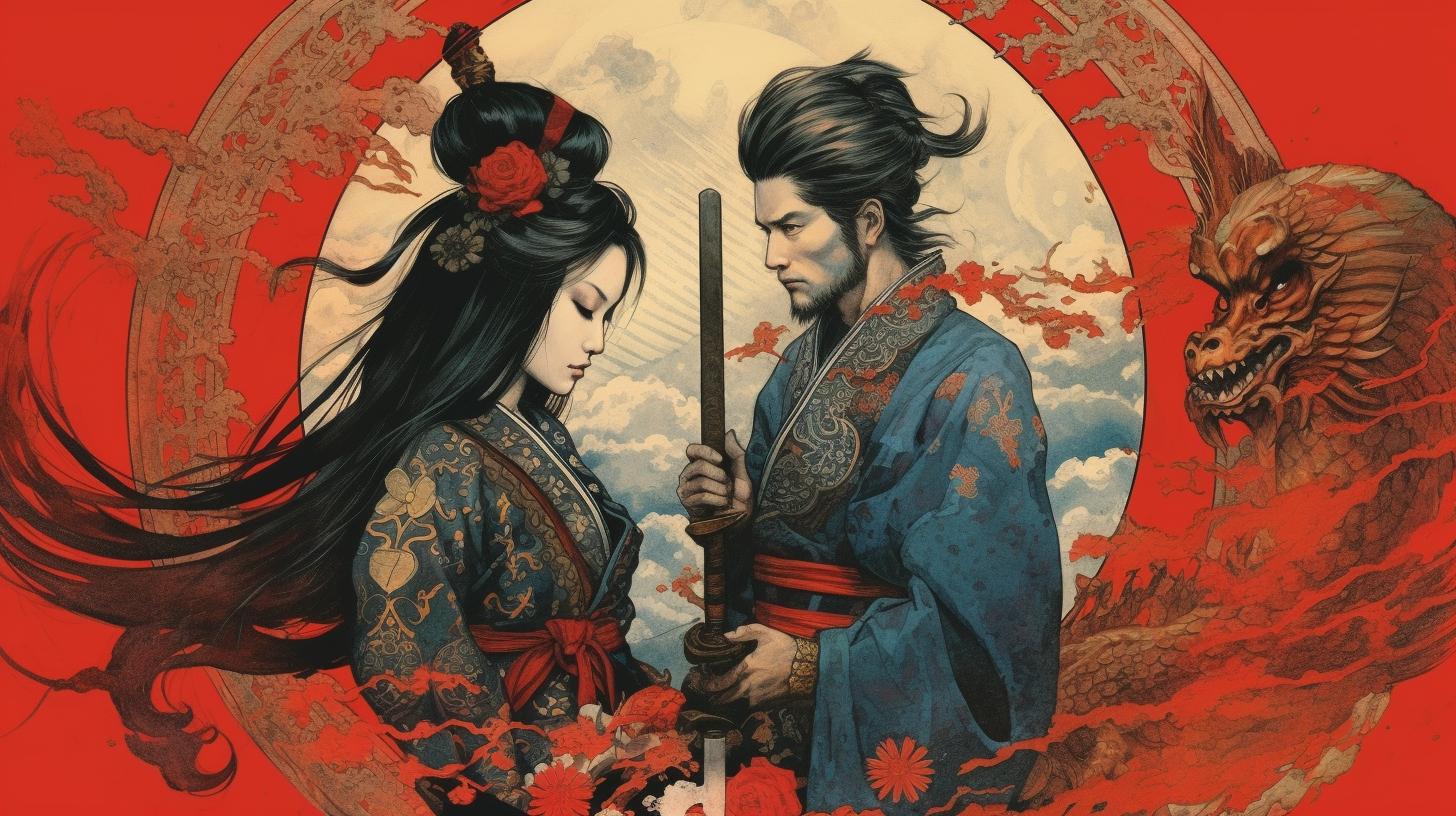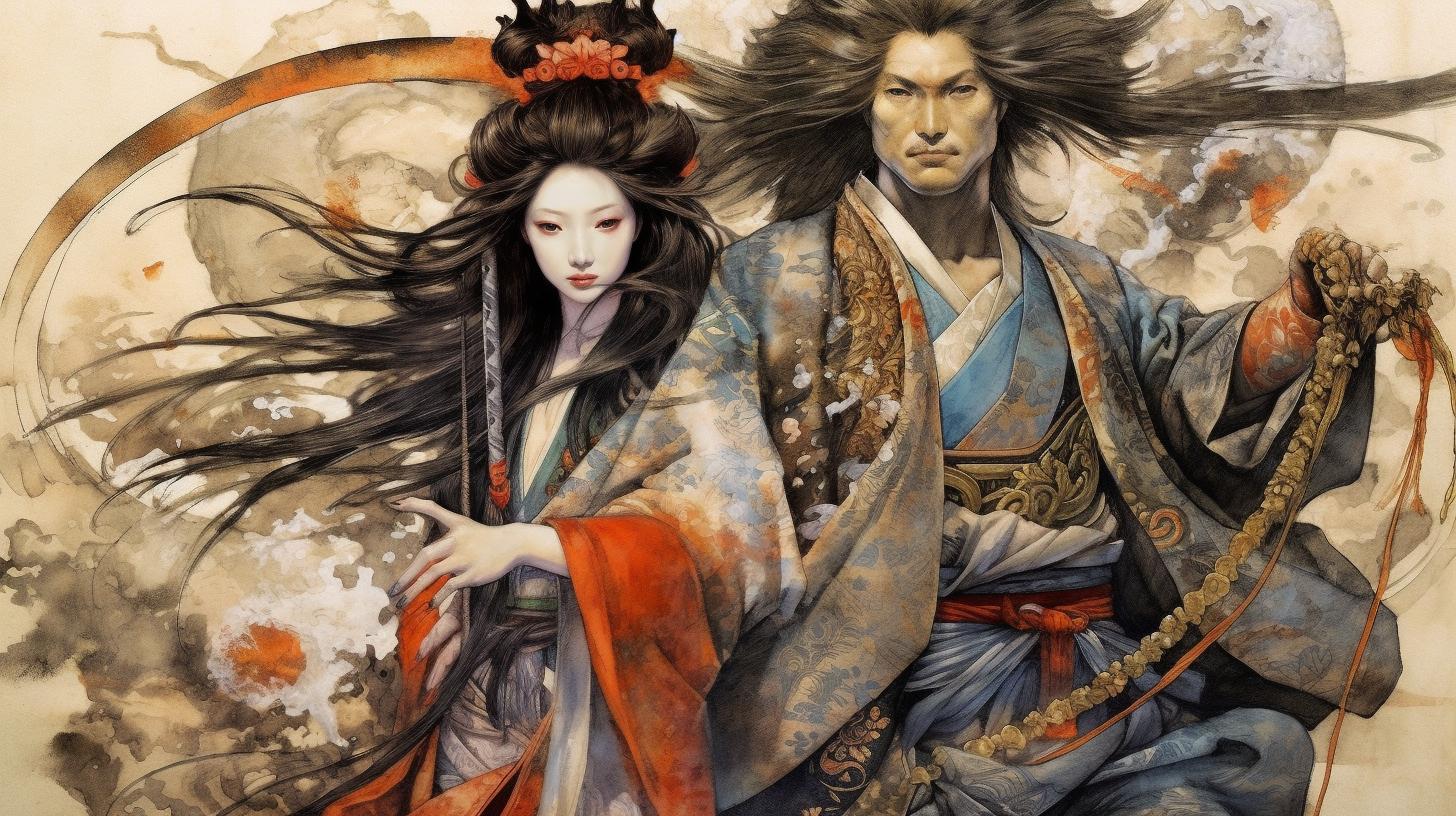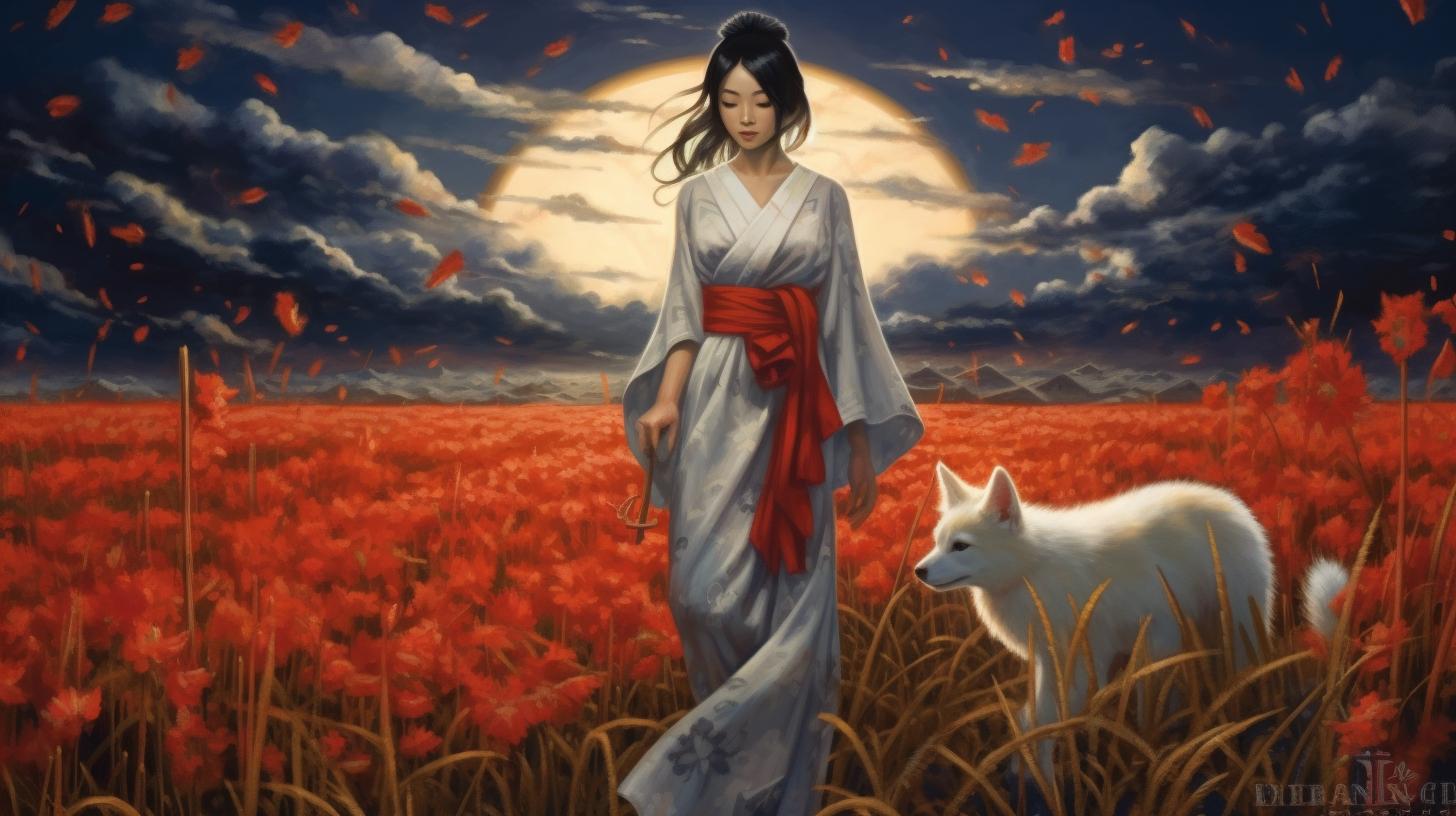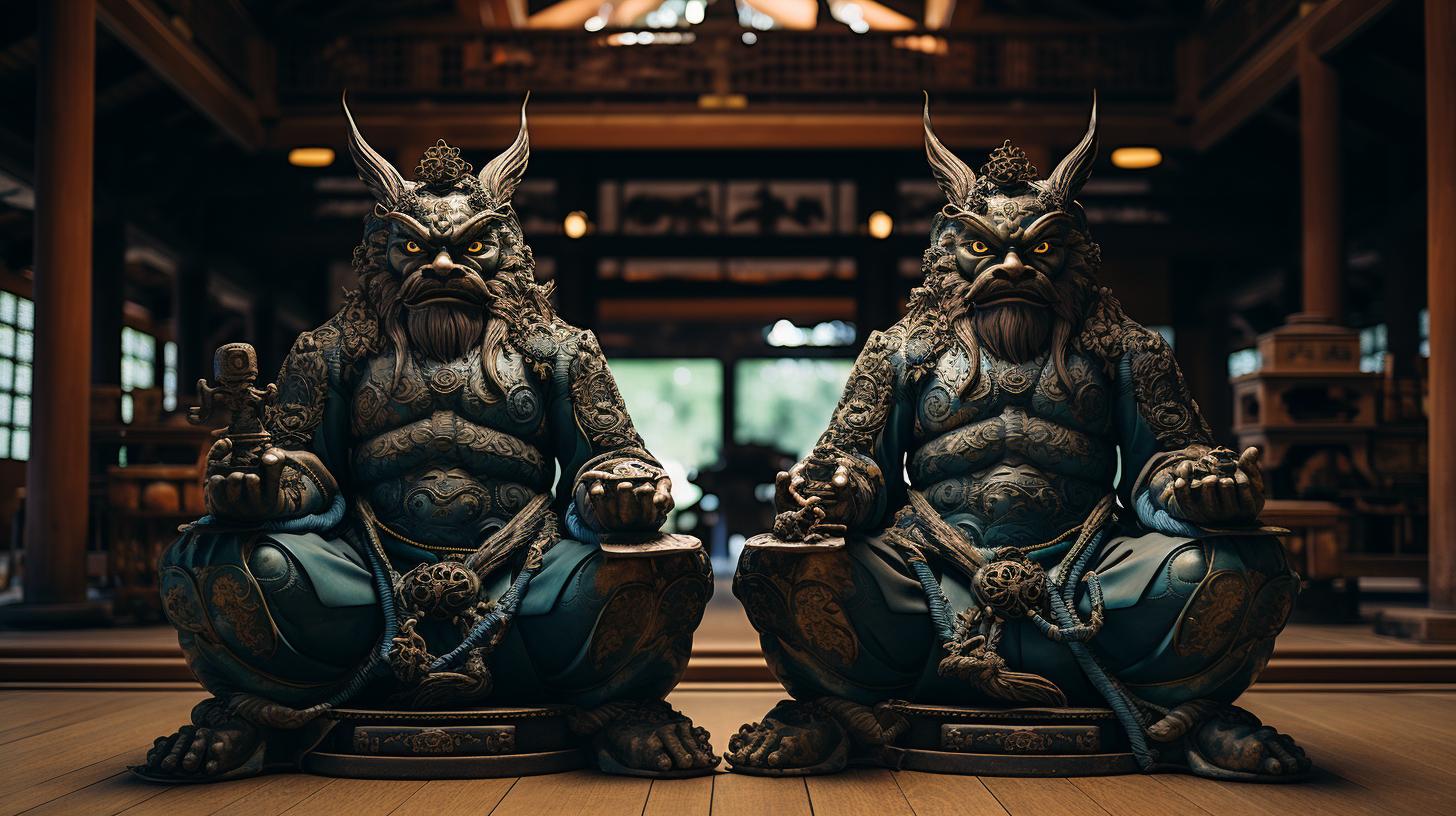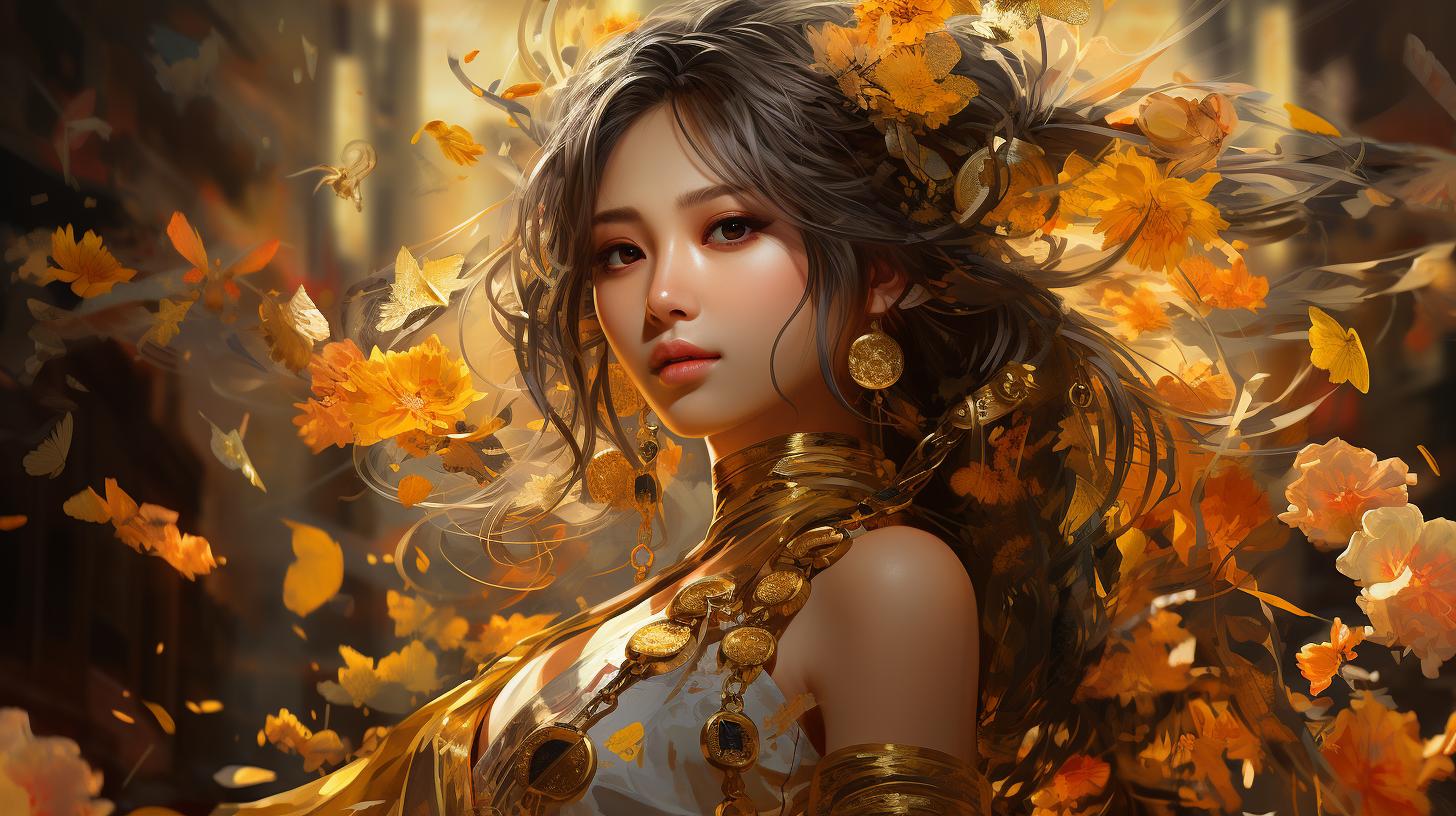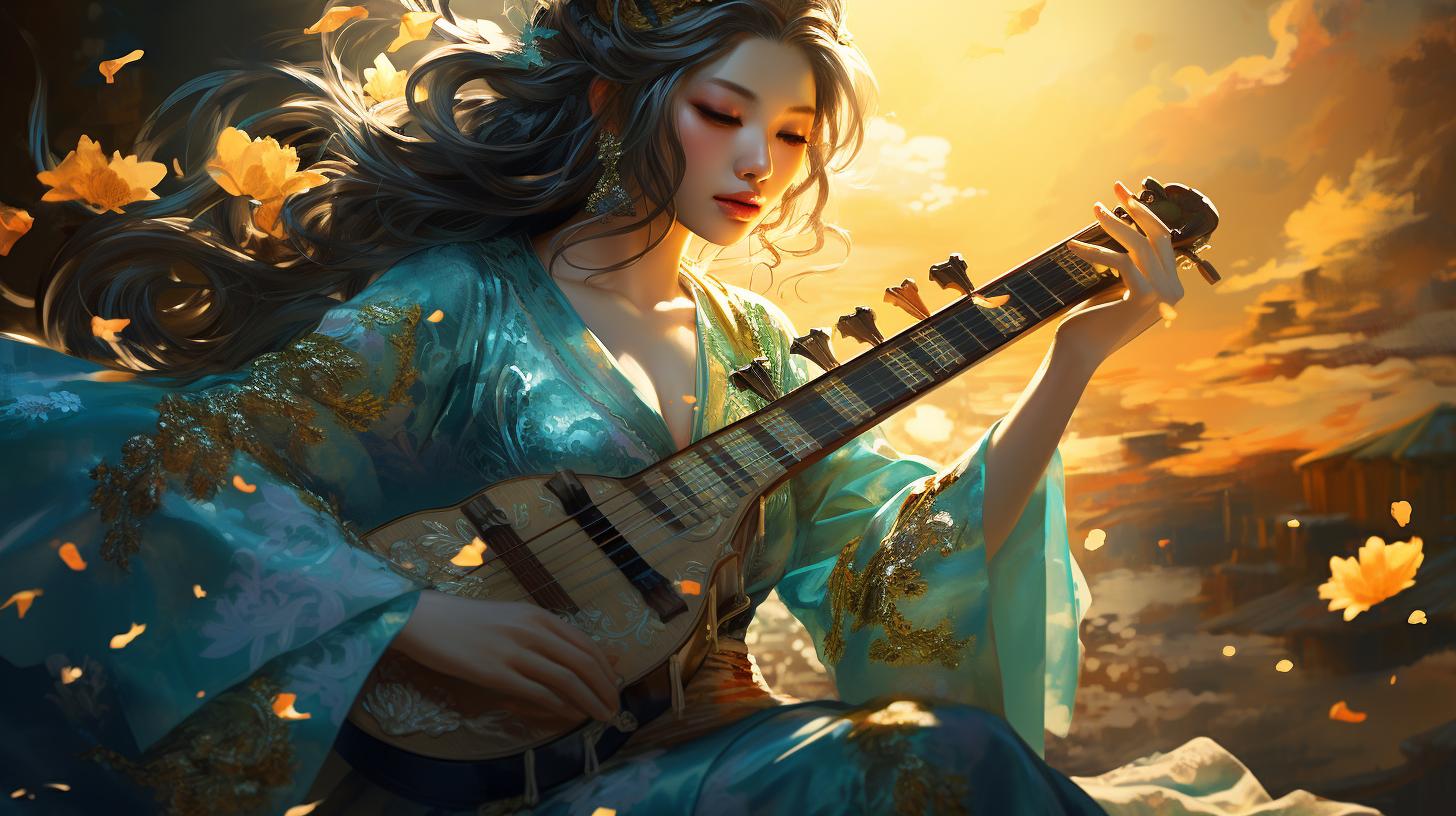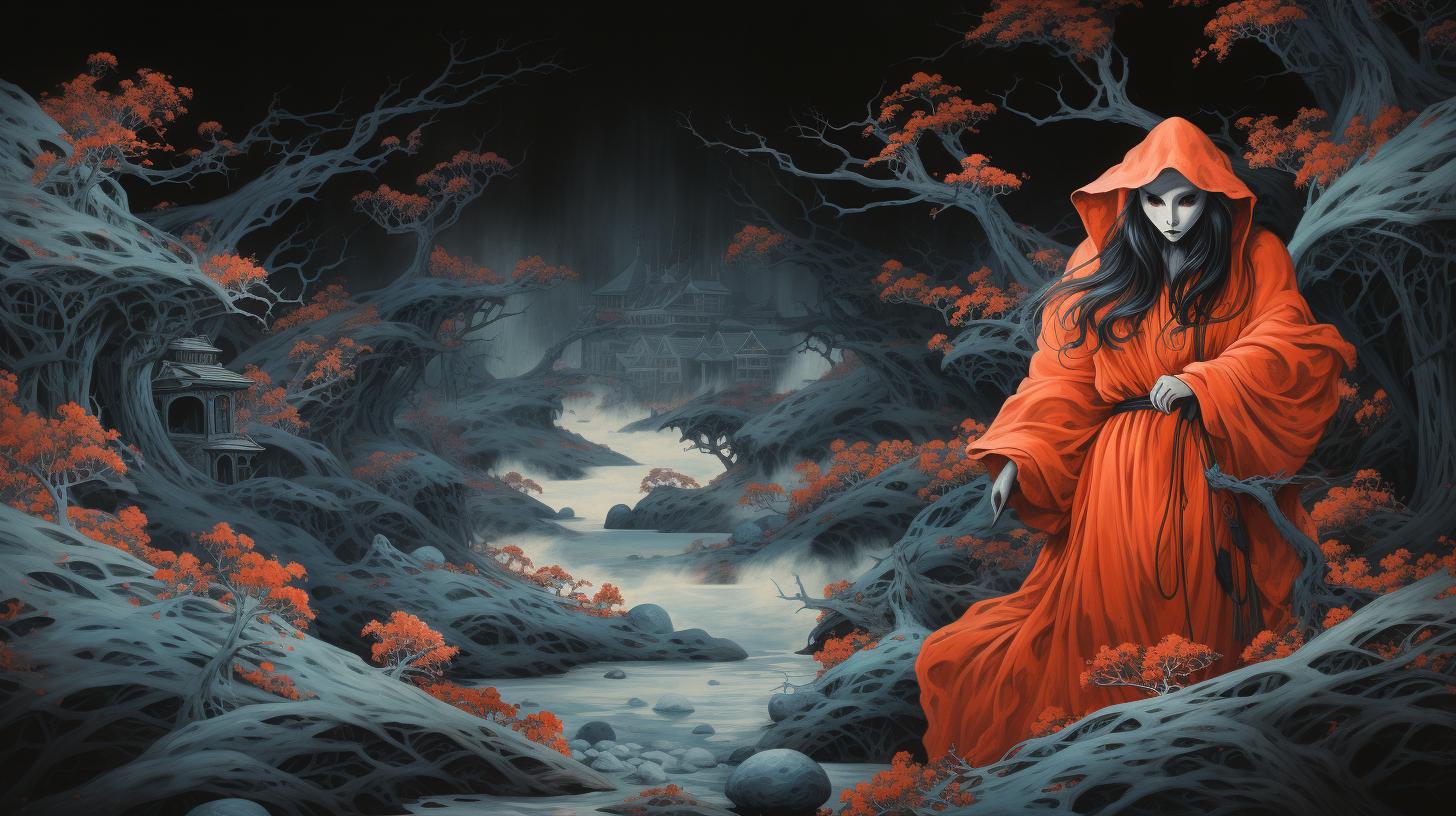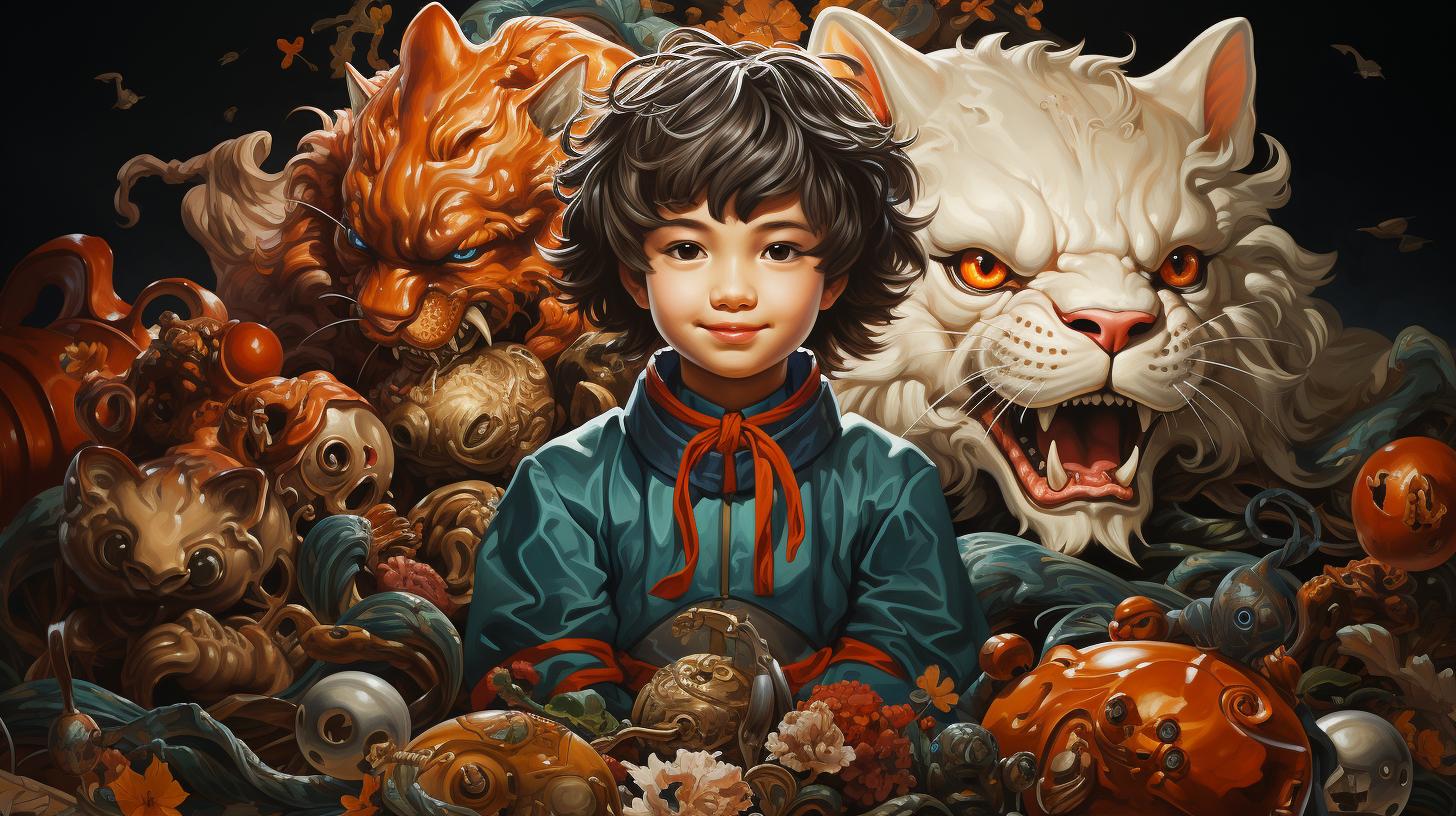Izanagi and Izanami Myth: The Creation Story in Japanese Shintoism
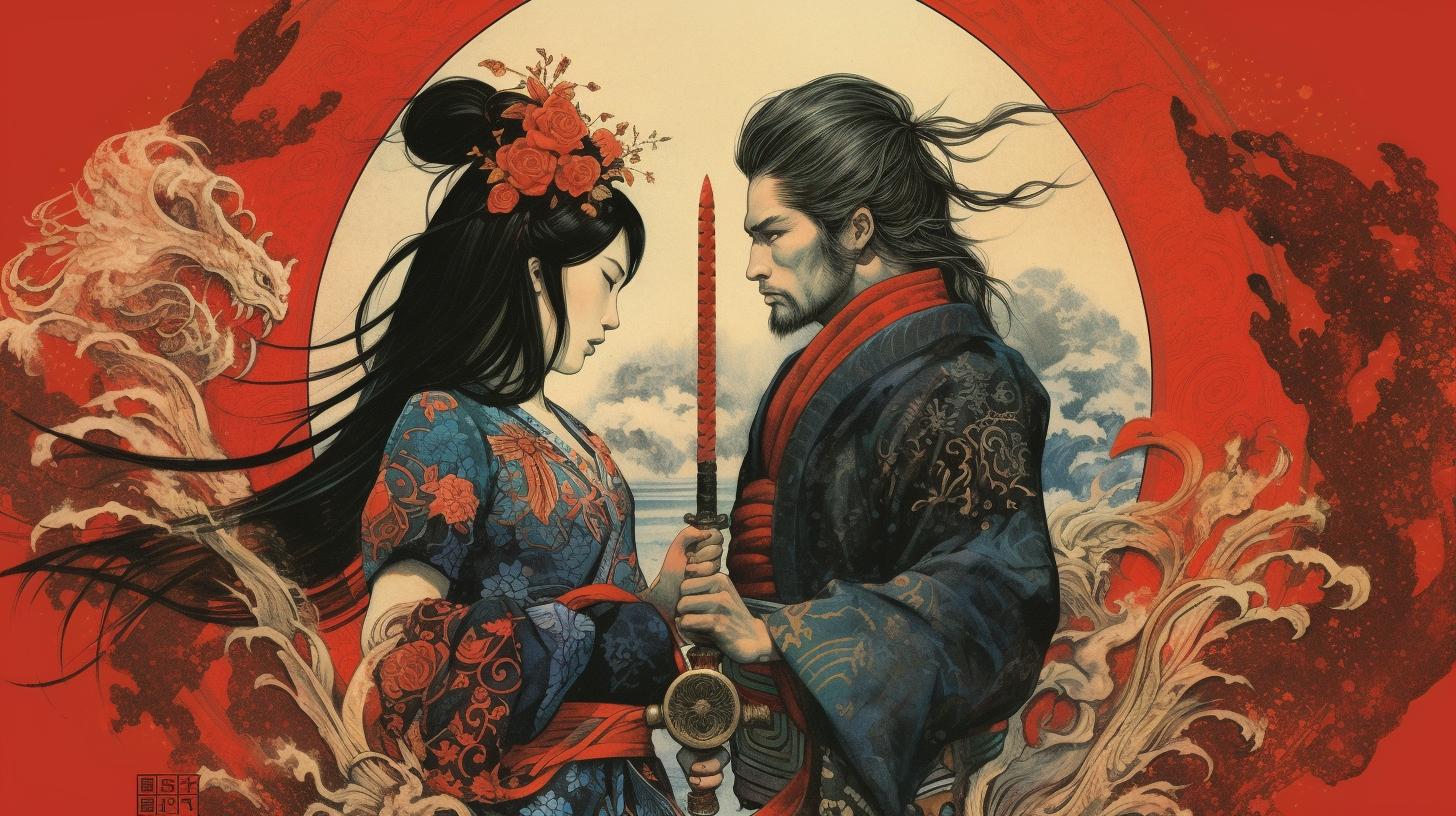
The creation myth of Izanagi and Izanami is an important story in Japanese Shintoism. This myth tells the story of a divine couple who created the islands of Japan and produced many gods and goddesses.
They used a jeweled spear to stir the primeval ocean and create the first solid land. However, tragedy struck when Izanami died in childbirth and went to the realm of death.
Izanagi went to retrieve her, but fled in horror at her appearance and blocked the entrance between Yomi and the living world. This story explores themes of creation, life, death, and separation.
Shintoism integrates rituals into Japanese culture, and emperors trace their divine right to the deities. The myth is recorded in collections of oral myths forming the basis of the Shinto religion and depicted in Japanese art.
The historical context and significance of this myth continue to be debated by scholars.
The Creation Myth of Izanagi and Izanami
According to Japanese Shintoism, the creation myth begins with the divine couple Izanagi and Izanami, who stir the primeval ocean with their jeweled spear to create the first solid land. Izanami and Izanagi are considered the first gods and goddesses in Japanese mythology, and they symbolize the union between male and female principles of the universe.
Who were Izanagi and Izanami?
Izanagi and Izanami were a divine couple in Japanese Shintoism who were responsible for creating the islands of Japan and countless other gods and goddesses. They symbolize the concept of yin and yang, with Izanagi as the male principle and Izanami as the female principle.
They are seen as the ultimate creators of the universe.
The Creation of Japan
Using a jeweled spear, Izanagi and Izanami stirred the primeval ocean and created the first solid land, which became the Japanese islands. They also raised pillars to support the sky, and Izanami gave birth to the islands of Japan, which were their children.
The Birth of Deities
Izanami and Izanagi had eight children who became the islands of Japan. They also created many other deities to represent the natural features of Japan, such as mountains, rivers, and forests.
These deities were seen as protectors of the land and were worshiped throughout Japanese history.
Tragedy and Separation
The Death of Izanami
According to the Izanagi and Izanami myth, after the creation of Japan, Izanami gave birth to various deities, including the god of fire. However, during the birth of her last child, Kagutsuchi, she suffered grave injuries, and her body became fatally polluted.
Izanami then died and was sent to the underworld, called Yomi.
Izanagi’s Journey to Retrieve Her
Izanagi, devastated by the loss of his beloved wife, decided to venture into Yomi to retrieve her, even though he knew it was forbidden. When he found Izanami, she informed him that she had already eaten the food of the underworld, and they could not return.
Izanagi pleaded with her to leave, but she warned him against looking at her. However, he broke that promise and saw that Izanami’s body was now rotting and infested with maggots.
Fleeing in disgust, he blocked the entrance to Yomi with a large boulder.
The Entrance to Yomi Blocked
Upon his return to the living world, Izanagi performed a purification ritual to rid himself of the impurities he had acquired in Yomi. During this ritual, he gave birth to many new deities, including three noble ones that would later rule over Japan.
Meanwhile, Izanami felt ashamed and angry at being abandoned by her husband. She sent the storm god Susanoo to destroy Izanagi’s creation. Izanagi, in turn, battled and defeated Susanoo, cementing his authority as the creator of the living world.
This tragedy and separation marks a turning point in the Izanagi and Izanami myth, exploring themes of love, loss, and death. The entrance to Yomi blocked symbolizes the separation between the living and the dead, preventing communication and any possibility of reconciliation.
In Japanese culture, this myth continues to influence beliefs and practices related to death and the afterlife. Additionally, the story of Izanagi and Izanami shows the importance of purification and ritual in Japanese culture, enhancing their connection with the divine.
Purification and the Birth of Deities
Izanagi’s Bath and Purification
After Izanami’s death, Izanagi journeyed to the realm of the dead to retrieve her. However, when he saw her rotting corpse, he fled in terror and returned to the living world.
In the course of this journey, he had been contaminated by the pollution of the underworld, and he realized that he needed to purify himself. He went to a river, undressed, and began to bathe.
As he washed himself, more deities or kami were born from his purifications. He washed his left eye, and the god Amaterasu, the sun goddess, was born. From his right eye, he gave birth to Tsukuyomi, the moon god.
And from his nose came Susanoo, the god of storms and the sea. Izanagi then divided his kingdom among his three noble children. The bath was a ritual of purification, and it is still performed ceremonially in Shinto shrines today.
The Birth of Many Deities
As Izanagi purified himself, numerous deities emerged from his purifications. These included the deity of fire, Kagutsuchi, who was born from the blood that dribbled from Izanagi’s sword when he killed Izanami’s child.
After Kagutsuchi‘s birth, Izanagi was saddened by the continued absence of his wife and traveled to Yomi once more to attempt to bring her back. However, she had consumed food from the underworld, and so she could not leave.
Therefore, Izanagi had to return to the living world alone.
The Division of Kingdom Among Noble Children
Following his ritual bath, Izanagi divided his kingdom among his three children. Amaterasu was given the heavens, Tsukuyomi was given control of the night and the moon, and Susanoo was given the seas.
These three deities became the most prominent in the Japanese pantheon, and the imperial family traced their lineage back to Amaterasu. The division of kingdom among the noble children represented a balance of power and the different elements of nature.
In conclusion, the purification and birth of deities is a crucial part of the Izanagi and Izanami myth. The bath was a ritual of purification that led to the birth of many deities.
Additionally, the division of kingdom among Izanagi’s noble children ensured a balanced representation of nature’s elements. The ritual of purification and division of the kingdom continue to be relevant in modern-day Japan, where Shinto shrines are still used in ceremonies.
Themes and Integration into Japanese Culture
Themes in the Myth
The myth of Izanagi and Izanami touches upon various themes that remain relevant in Japanese culture today. One of the primary themes is creation and the birth of Japan. The story explains how the divine couple created the islands of Japan and produced the other gods and goddesses.
This aspect of the myth is reflected in Japanese art, where Japan’s landscape and natural features are frequently depicted. Another prevalent theme in the myth is life and death. The tragic death of Izanami during childbirth and Izanagi’s journey into Yomi to retrieve her shows how Japanese culture values the cycle of life and death.
The myth also highlights the theme of separation, showing how death causes a separation between the living and the dead.
Rituals in Shintoism
The myth of Izanagi and Izanami has played a prominent role in the development of Shintoism, the indigenous religion of Japan. Shintoism involves various rituals, many of which are based on the Izanagi and Izanami myth.
For example, the practice of purification before entering a shrine, or misogi, is said to have originated from the story of Izanagi purifying himself after traveling to the underworld. Another example is the many festivals and rituals that celebrate nature and express gratitude to the deities for providing a bountiful harvest.
These festivals often feature processions and offerings made to the deities, emphasizing the importance of community and unity in Japanese culture.
Emperor’s Divine Right and Izanagi and Izanami Myth in Japanese Culture
The myth of Izanagi and Izanami also holds significant political and cultural importance in Japan. Emperors in Japan trace their divine right to the deities and are said to be descended from them.
This tradition can be traced back to the myth of Izanagi and Izanami, where their children became the islands of Japan and produced the imperial line. The myth’s influence is also reflected in contemporary Japanese culture through various mediums like literature, film, and manga.
Many works of art and literature draw inspiration from the myth and use it as a symbol of Japan’s cultural heritage. In conclusion, the Izanagi and Izanami myth is a fundamental story in Japanese Shintoism that touches upon various themes like creation, life, death, and separation.
The myth has been integrated into Japanese culture through various rituals, festivals, and even the imperial line. Its influence on art, literature, and film demonstrates its continued relevance in Japanese culture today.
Depictions in Art and Visual Arts
Izanagi and Izanami Myth in Japanese Art
The Izanagi and Izanami myth has been depicted in various forms of Japanese art, including paintings, sculptures, and woodblock prints. One of the most famous depictions of the divine couple is the painting “Izanagi and Izanami” by Kano School artist Tani Bunchō.
The painting shows the couple standing together with the jeweled spear, which they used to create the islands of Japan. Another famous depiction of Izanami is the sculpture “The Creation of Izanami” by artist Masao Tsuruta, which shows Izanami holding her newborn daughter, the goddess of the sun, Amaterasu.
The Heavenly Jeweled Spear
The heavenly jeweled spear plays a significant role in the Izanagi and Izanami myth, as they used it to create the first land of Japan. The spear is considered one of the Three Sacred Treasures of Japan, along with the mirror and the jewel, and is an important symbol in Japanese culture and mythology.
The spear is often depicted in Japanese art, and replicas are used in various religious ceremonies.
The Storm God Susanoo
The storm god Susanoo is another important character in the Izanagi and Izanami myth, as he was born from Izanagi’s nose and went on to create various natural wonders in Japan.
Susanoo is often depicted in Japanese art as a powerful and chaotic figure, wielding his sword and causing storms and other natural disasters. One famous depiction of Susanoo is the woodblock print “Susanoo and the Eight-Headed Serpent” by Utagawa Kuniyoshi.
Overall, the Izanagi and Izanami myth has had a significant impact on Japanese art and visual culture, with various depictions of the divine couple, the heavenly jeweled spear, and the storm god Susanoo in different mediums.
These depictions offer insight into how the myth has been interpreted and reimagined throughout history and continue to inspire artists today.
Izanagi and Izanami Myth: Historical Context
The myth of Izanagi and Izanami has a rich historical context in Japan, and its importance in Japanese mythology is prominent. The story of the divine couple has been passed down through oral tradition for centuries and has been recorded in ancient texts such as the Kojiki and Nihon Shoki.
Record of Myth in Ancient History
The Izanagi and Izanami Myth’s earliest known record comes from the Kojiki, a historical text composed in 712 CE. In the Kojiki, the creation myth details how the divine couple created the islands of Japan and many other deities.
The myth is also recorded in the Nihon Shoki, a historical text written in the early 8th century that chronicles Japan’s history.
Textual Record: Nihon Shoki
The Nihon Shoki’s account of the Izanagi and Izanami Myth is more detailed than the Kojiki version and provides insights into the myth’s historical and cultural significance. The Nihon Shoki describes how the divine couple used their jeweled spear to create the first landmass in the primordial ocean, giving rise to the islands of Japan.
It also details the tragic death of Izanami and the consequences of Izanagi’s journey to retrieve her.
Significance in Ancient Japanese Mythology
The Izanagi and Izanami Myth played a crucial role in ancient Japanese mythology, serving as the foundation for the Shinto religion. Shintoism is a polytheistic religion that originated in Japan and involves the worship of various deities, including the divine couple.
The myth’s depiction of the creation of Japan and the birth of deities demonstrates the deep connection between Japanese people and their natural environment.
The story’s themes of creation, life, death, and separation also hold significant cultural and spiritual value. They reflect the cyclical nature of life and the belief in reincarnation in Japanese culture.
Additionally, the legend of Izanagi and Izanami served as a model for familial relationships, and the divinities present in the myth were often seen as protective spirits of Japanese communities.
- The myth of Izanagi and Izanami is representative of the ancient Japanese belief in the power of nature and the importance of respecting it.
- The themes of creation, life, death, and separation reflect the cyclical nature of existence and the belief in rebirth.
- The Izanagi and Izanami Myth’s historical significance is demonstrated by its prominence in href=”https://oldworldgods.com/japanese/”>Japanese mythology and religion.
- The myth’s cultural value has been reflected in Japanese art, literature, and society for centuries.
It continues to play an integral role in Japan’s cultural heritage and is celebrated in various festivals and rituals throughout the country.
Questions Answered
What was the significance of Izanagi and Izanami’s relationship?
Izanagi and Izanami were the divine couple who created Japan’s islands and many deities. Their relationship was significant because it symbolized the unity of opposites in creation. Izanagi represented the masculine principle, and Izanami represented the feminine principle.
Together, they stirred the primeval ocean with a jeweled spear to create the first solid land, and they had eight children who became the islands of Japan. Their creative act represented the union of heaven and earth, and they were the ancestors of all the deities that the Japanese worship.
Who were the children of Izanagi and Izanami?
Izanagi and Izanami had eight children who became the islands of Japan: Awaji, Shikoku, Oki, Tsukushi, Iki, Sado, Kyushu, and Honshu. Each child had different features that represented the diversity of Japan’s natural landscape.
These children were the deities who ruled over the different parts of the country. Additionally, Izanagi’s union with other deities produced many offspring, creating the vast pantheon of Japanese gods and goddesses.
What themes are explored in the Izanagi and Izanami Myth?
The Izanagi and Izanami Myth explores several themes, including creation, life, death, and separation. It presents a vision of the universe as a dynamic and evolving system, in which different forces interact to produce change.
The story of Izanagi and Izanami’s relationship also highlights the importance of the unity of opposites in Japanese mythology. In this sense, the myth symbolizes the balance between the masculine and the feminine, and the importance of the creative act in shaping the world.
What is the connection between the Izanagi and Izanami Myth and Japanese culture?
The Izanagi and Izanami Myth is an essential part of Japanese culture, and it reflects the country’s unique worldview and spiritual heritage. The story of the divine couple who created Japan’s islands and many deities has been passed down through generations of Japanese people, and it remains an integral part of the country’s religious and cultural identity.
Additionally, many of the deities in Japanese mythology are associated with natural features of Japan, such as mountains, rivers, and forests, illustrating the close relationship between Japanese culture and nature.
How is the Izanagi and Izanami Myth depicted in art?
The Izanagi and Izanami Myth has been depicted in various forms of Japanese art, including paintings, sculptures, and prints. The most common images represent the divine couple holding a jeweled spear, stirring the primeval ocean, and creating the islands of Japan.
Additionally, many other deities from Japanese mythology are often depicted in art, representing natural features of Japan, such as the storm god Susanoo or the heavenly jeweled spear. These images are iconic of Japanese culture and have been revered for centuries.
What is the historical significance of the Izanagi and Izanami Myth?
The Izanagi and Izanami Myth is one of the oldest and most significant creation myths in Japanese mythology. It has been passed down through generations of Japanese people, representing the country’s unique spiritual and cultural heritage.
The myth has influenced various aspects of Japanese culture, including art, literature, and religion, and it remains an essential part of the country’s identity. Historically, the myth also played a significant role in Japanese politics, with emperors tracing their divine right to the deities, such as Izanagi and Izanami.

